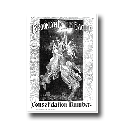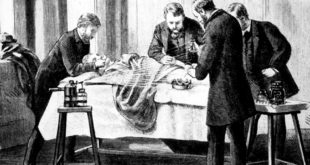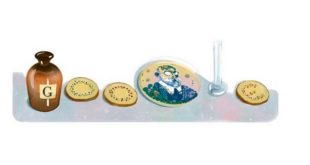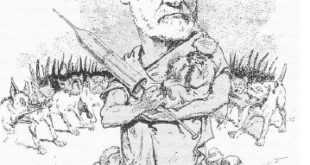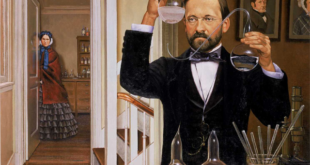M. Louis Pasteur, who is undoubtedly the most distinguished chemist living, has completed at his laboratory in Paris a series of experiments which have led to important discoveries in regard to the treatment of hydrophobia. The conclusions reached by the great experimentalist, which are to be embodied in a report to the Academy of Sciences are of a character fit to rank with his solution of the mystery of the foot and mouth disease and his other investigations relative to the germ theory. M. Pasteur, in an outline description of the results of his labors in this new field of inquiry, speaks confidently of his ability to make a practical application of his remedy – a remedy for which science has heretofore sought in vain. His experiments, covering a period of four years, first led to the discovery that the virus which causes hydrophobia loses its intensity by transmission to certain animals and increases its intensity by transmission to certain other animals. With the rabbit, for example, the virus increases, while with the monkey it decreases in power. M. Pasteur took the virus direct from the brain of a dog that had died from hydrophobia and inoculated a monkey, the monkey dying after the inoculation. From the first monkey the virus, weakened in intensity, was applied to a second monkey, and from a second to a third, the process being continued until a virus was obtained so weak as to be almost harmless.
With the virus of reduced intensity M. Pasteur inoculated a rabbit, producing the extraordinary result of an increase in the virulent quality of the poison. The inoculation of a second rabbit with virus taken from the first showed a still further development of strength and the experiment was followed up until the poison had once more attained the maximum intensity. By these means the chemist obtained virus of different degrees of power. The next step was the inoculation of a dog, first with the weakest virus form the rabbit; then with the virus from the second rabbit, and finally with the rabbit virus of maximum intensity. Permitting a few days to pass, M. Pasteur inoculated the dog with virus taken from the brain of another dog that had just died of acute madness. The dog upon which the experiments of inoculation had been made proved completely insusceptible to hydrophobia. This experiment was repeated with unvarying success.
Proceeding still further the scientist took two dogs and inoculated both with virus from a dog that had just died of acute hydrophobia. One of the animals was left to himself and soon died of the most extreme form of rabies. The other was subjected to treatment, receiving three rabbit inoculations, beginning with the weakest and ending with eh strongest. The second dog became completely insusceptible to hydrophobia, and was looked upon by M. Pasteur as completely cured. From these developments the deduction is made that whoever gets bitten by a mad dog has only to submit to the three inoculations to remove all fear of an attack of hydrophobia. There is not the slightest reason for hesitating to accept the statement of fact made by M. Pasteur. The disease, it is true, is of only occasional occurrence, but there is enough in the occasion to warrant the exploration it has undergone. Certain people entertain a fear of it that is almost absurd, and they will no doubt find their apprehensions greatly relieved by what the experiments in question have revealed. The chance of a man being attacked by hydrophobia is about as improbable as that he will not eventually die. Indeed, the malady is of such rare occurrence that it has even been questioned whether the disease existed at all. M. Pasteur has conclusively demonstrated, among other things, however, that hydrophobia is a well defined disease and that it is entirely susceptible of effective treatment.
There are many peculiar features bout hydrophobia, among them the fact that it exists only in certain countries. It has been affirmed by competent observers that no case of the malady has ever been known in Asia. Whether this is true or not it is useless to attempt to account for it because we know so little about it, but the best testimony seems to be that it is confined to particular localities. There was a time, also, when it was thought that dogs were the only animals that suffered from rabies. This belief has been entirely removed, not only by M. Pasteur’s exhibit of its existence in the rabbit and the monkey, but by results in the field of general observation. It is not many years since a death occurred in the city resulting from the bite of a cat, the feline and the victim exhibiting hydrophobic symptoms, and cases have been known where both horses and cattle have become afflicted with madness of an acute type. As to the cause from which hydrophobia springs, nothing yet developed enables us to satisfactorily account. In fact it has been impossible to trace the origin of the germ, but the established existence of the germ in itself is sufficient to render advisable the point of investigation toward the discovery of remedial measures as effective as those developed by M. Pasteur and others of his co-laborers in the field of scientific research.
 Pasteur Brewing Louis Pasteur – Science, Health, and Brewing
Pasteur Brewing Louis Pasteur – Science, Health, and Brewing 